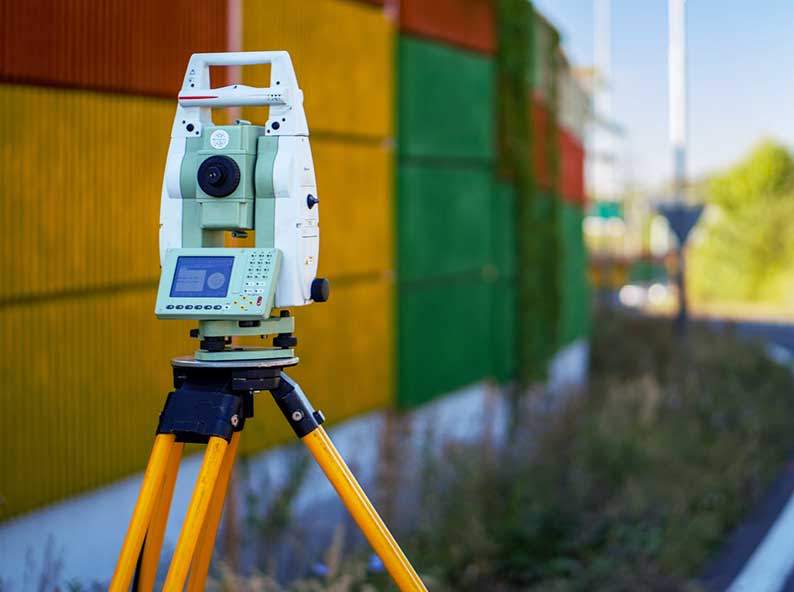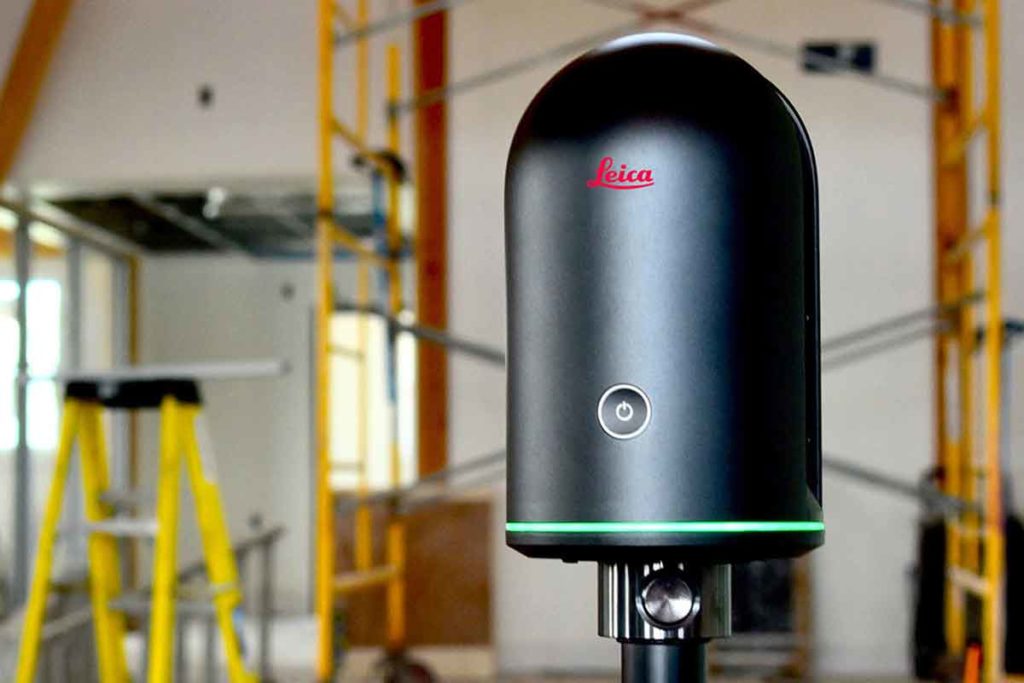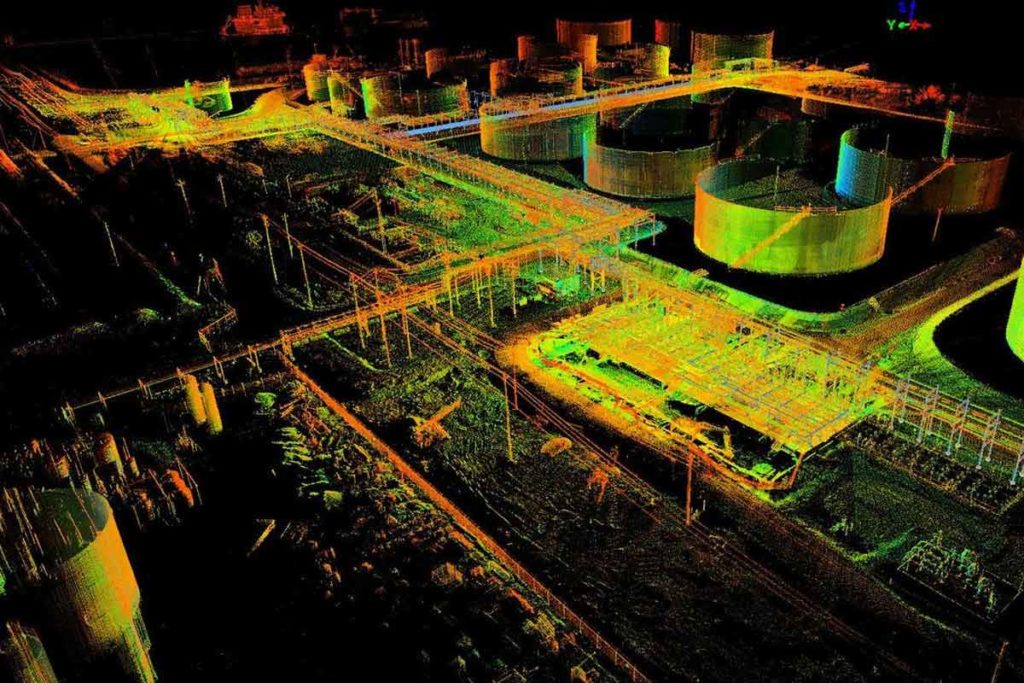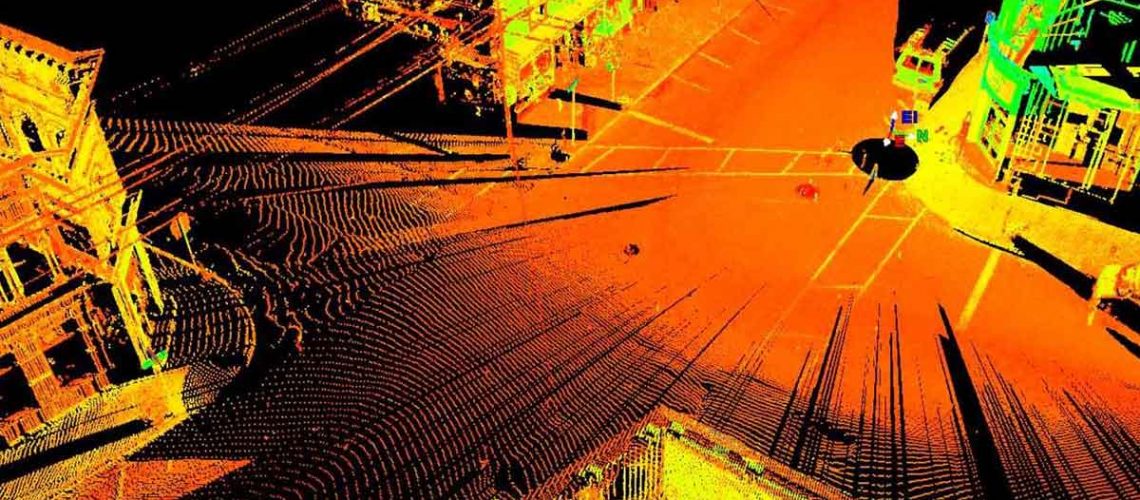This post is the second in a series looking at modern day discovery technology and how to use it within litigation. In my previous article, we started the discussion with digital imagery and issues surrounding how best to obtain it. This post will focus on electronic measuring data technology.
Part Two:
Electronic Measuring Devices
01. Total Station Data
This type of data is one of the oldest that I will discuss in this post, and it’s very similar to survey equipment when you have a stationary device that measures, very accurately, whatever point(s) you choose. This one is important to understand since police and highway patrol stations still use this technology in doing their investigations; so recognizing when it is being used may be critical for your case. A Total Station Theodolite device works by precisely measuring the horizontal, vertical and slope angle from the device, to any particular point, with a laser (accuracy down to approximately 1.5 mm).

Total Station Theodolite device
Typically if you receive a policy report that has precise data measured from a single point-of-origin or set of origin points, such as seen within the chart below, this would indicate that possibly a Total Station or similar device was used to collect measurements (i.e. x-axis, y-axis, z-axis and/or slope angle).

Often, the precise location of evidence can be crucial to the case, and being able to import such precise location information, automatically, provides a bullet-proof foundation because there is no option for interpretation by an expert or digital artist. Such porting of data can potentially improve accuracy and ensures: (i) that the data set, found within the written report was accurately recorded by the person(s) writing the report; (ii) ensures that such data is also translated precisely into a scaled diagram and/or 3D model that is not simply a set of points placed by hand, but rather a robust, objective dataset, as recorded by the original device and operator(s).
02. Laser Scanning Devices
This discussion of Laser Scanning devices will be the first introduced here, within this series of posts, and later expanded upon greatly within latter posts. In the last number of years, the cost of laser scanning devices has dropped from about $75,000 to about $15,000 for a good quality device.

Leica Laser Scanning device
Like a Total Station, a laser scanning device uses a laser to measure distances and height. However, unlike a Total Station that measures one precise measurement at a time, a laser scanning device will measure billions of distances and measurements during a scan. All such scanners rotate so that measurements occur in all directions, high and low. Modern laser scanners often include a photographic feature set, usually capable of taking high-resolution images during the laser scanning process. This image becomes the scan’s texture or coloration of all measurements (points) recorded.


Laser scanning point cloud data
A laser scanning device creates files for every scan taken, and then extremely sophisticated (and expensive) software can take all these various scans of an area (or set of areas) and stitch them together into a single 3D electronic model. With the right software, you can then view this scene from any angle, looking straight from the top-down or any other position. You can also see and measure anything else contextually recorded by the device at a later time during litigation. The importance of this last point, in regards to litigation, cannot be overstated: A modern laser scanner captures a dataset of billions of measurements paired with corresponding images, of every single object and thing within the device’s purview; this means later in a case, when the parties are able to hone in on key pieces of evidence, they will be able to review all aspects of the captured scene, even those aspects previously not deemed important. Almost all cases start by parties not knowing necessarily what is going to become important as a case develops. The biggest benefit of a set of laser scans is that since the device captures everything within its view, it allows all of the parties to later find out what is critical to their case, and refer back to the scans for the actual evidence to support that claim.
Below is a sample of what a set of laser scans (compiled as a point cloud) look like. It’s called a point cloud because those billions of measurements are actually captured as individual points within a 3D matrix. When combined together, they create the appearance of a 3D image that a viewer can spin, rotate and move around, as to further analyze the previously captured scene, using a computer.

Point Cloud 3D Animation by Cogent Legal
When the police or highway patrol use laser scan devices, they will clearly indicate in the report the name of the officer that came out to the scene and that laser scan data was obtained. For the sake of your client, make a habit of just requesting everything from the authorities with a request that covers anything they might have. I suggest the following request language.
“We request all information obtained by [name of department] regarding the incident of [date and name of parties] and all reports created therefrom. This request for all information includes: (1) all photographs and/or videos in their original electronic formats, and (2) all electronic measuring data obtained in its original electronic format, including total station data and/or laser scan data.”
By always including such a request at the beginning of your process, you never have to worry about not receiving some part of the electronic evidence that may prove critical later in a case.
Cogent makes it easy.
Laser scans and drones have replaced the measuring tape of yesterday. Understanding the power and limitations of this changing technology is a key aspect of modern litigation. We are able to create accurately scaled diagrams, such as floor plans, accident reconstructions, maps, and so on, directly from 3D data collected by our team. We work with you and your experts to build 3D models that allow audiences to connect with your case’s details from any angle, helping everyone get on the same page and develop the most effective arguments. Call Cogent Legal today and make sure your case is handled the right way—from the very start.


